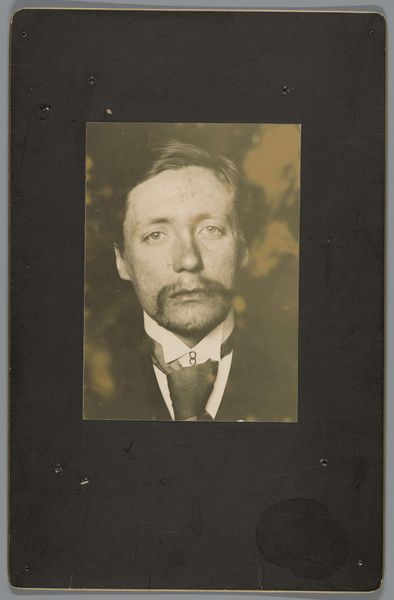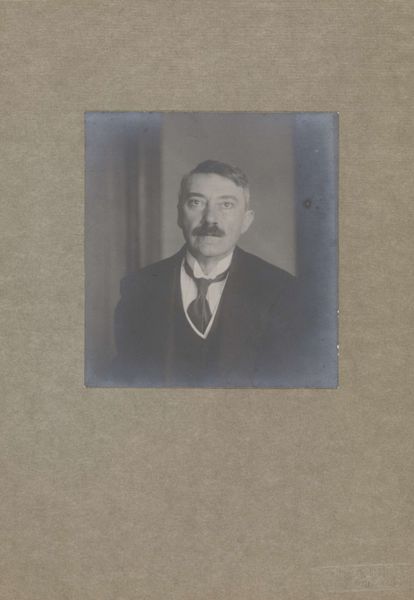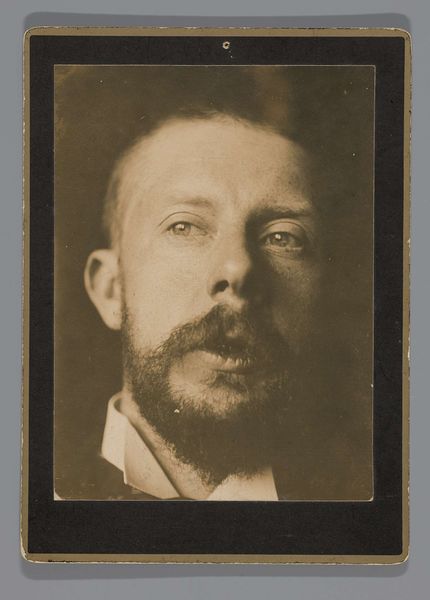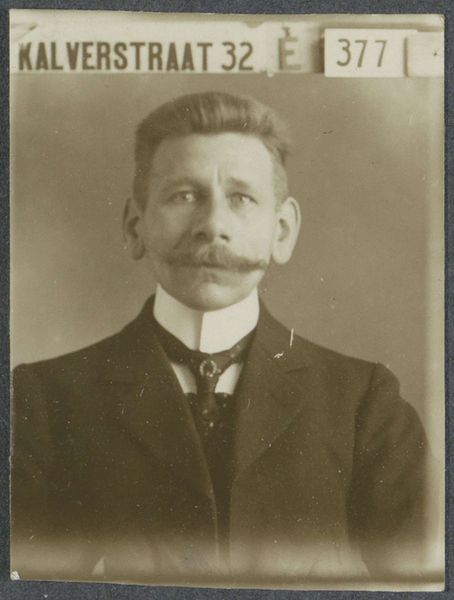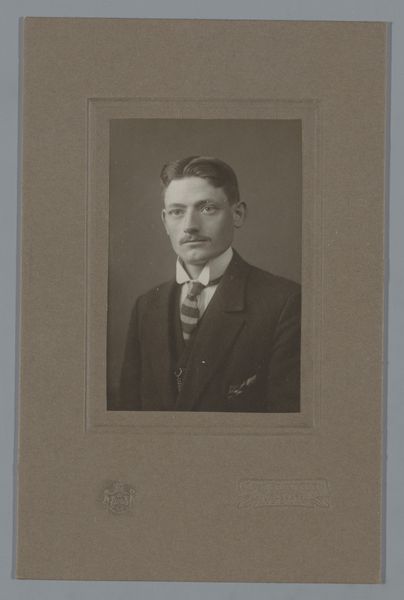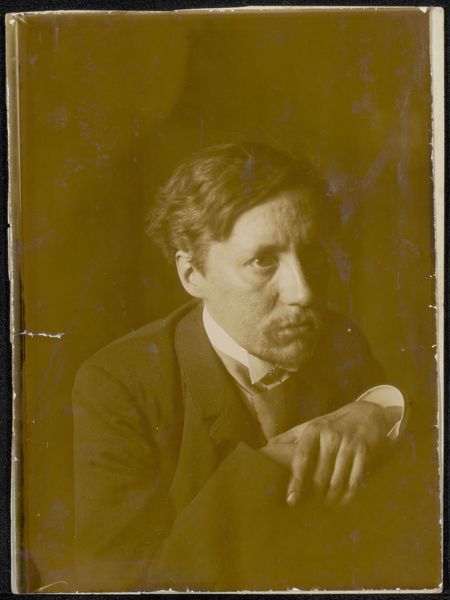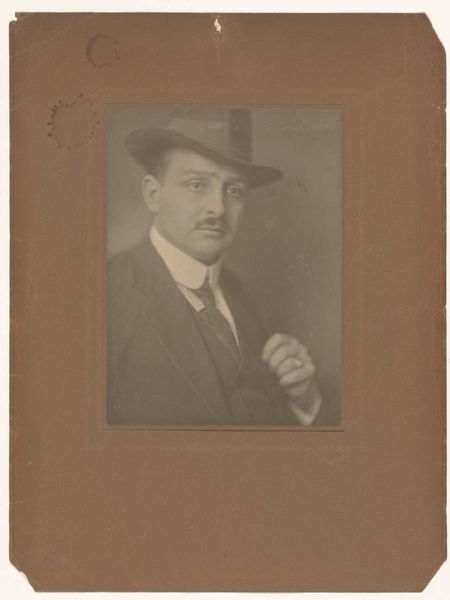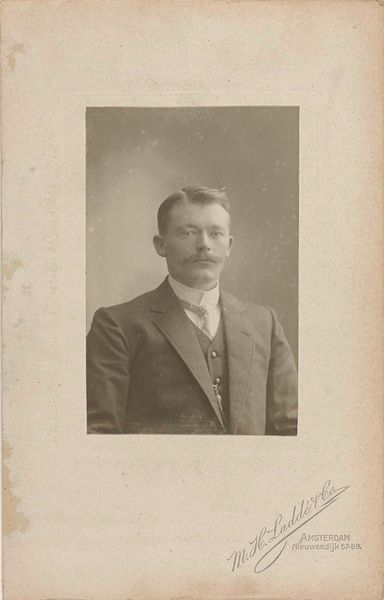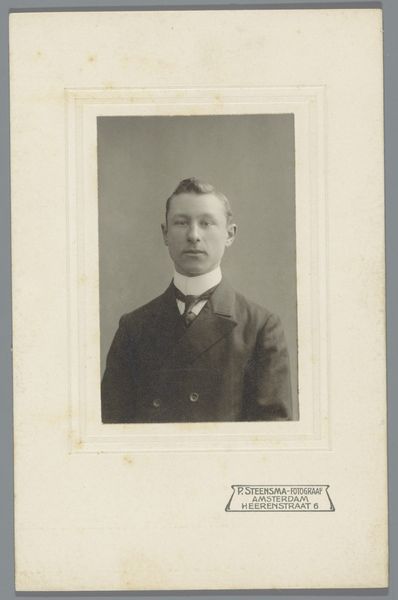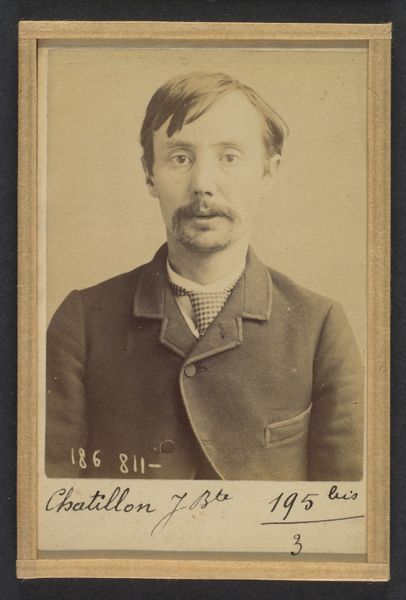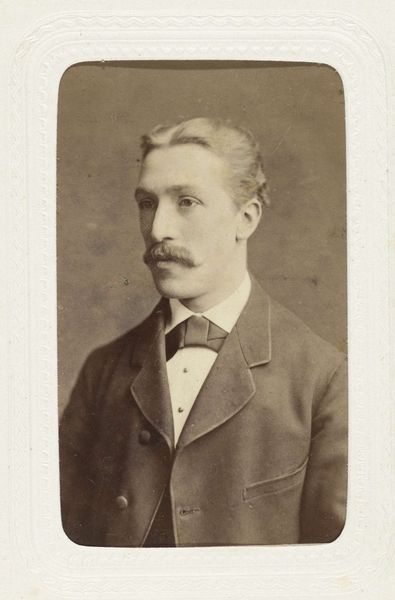
Dimensions: height 108 mm, width 80 mm, height 213 mm, width 137 mm
Copyright: Rijks Museum: Open Domain
Willem Witsen made this portrait of Willem Kloos using photography, a relatively new medium in the late 19th and early 20th century. Photography, unlike painting or sculpture, democratized art production, making it more accessible and efficient, aligning with the industrialized spirit of the era. Its chemical processes – the treatment of light-sensitive materials, development, and printing – allowed for a mechanical reproduction of reality that fascinated artists and the public alike. The sepia tone and the textured paper visible in the print add a tactile dimension to the image. In this portrait, photography captures not just the likeness of Kloos, but also the social and cultural context of the time. It reflects the rise of a middle class that could afford to commission or produce such portraits, thus challenging traditional notions of artistic skill and value. The use of photography ties into wider issues of labor, politics, and consumption, reshaping artistic practices. So, next time you look at a photograph, consider the work involved in its production, and how it challenges distinctions between art and craft.
Comments
No comments
Be the first to comment and join the conversation on the ultimate creative platform.
